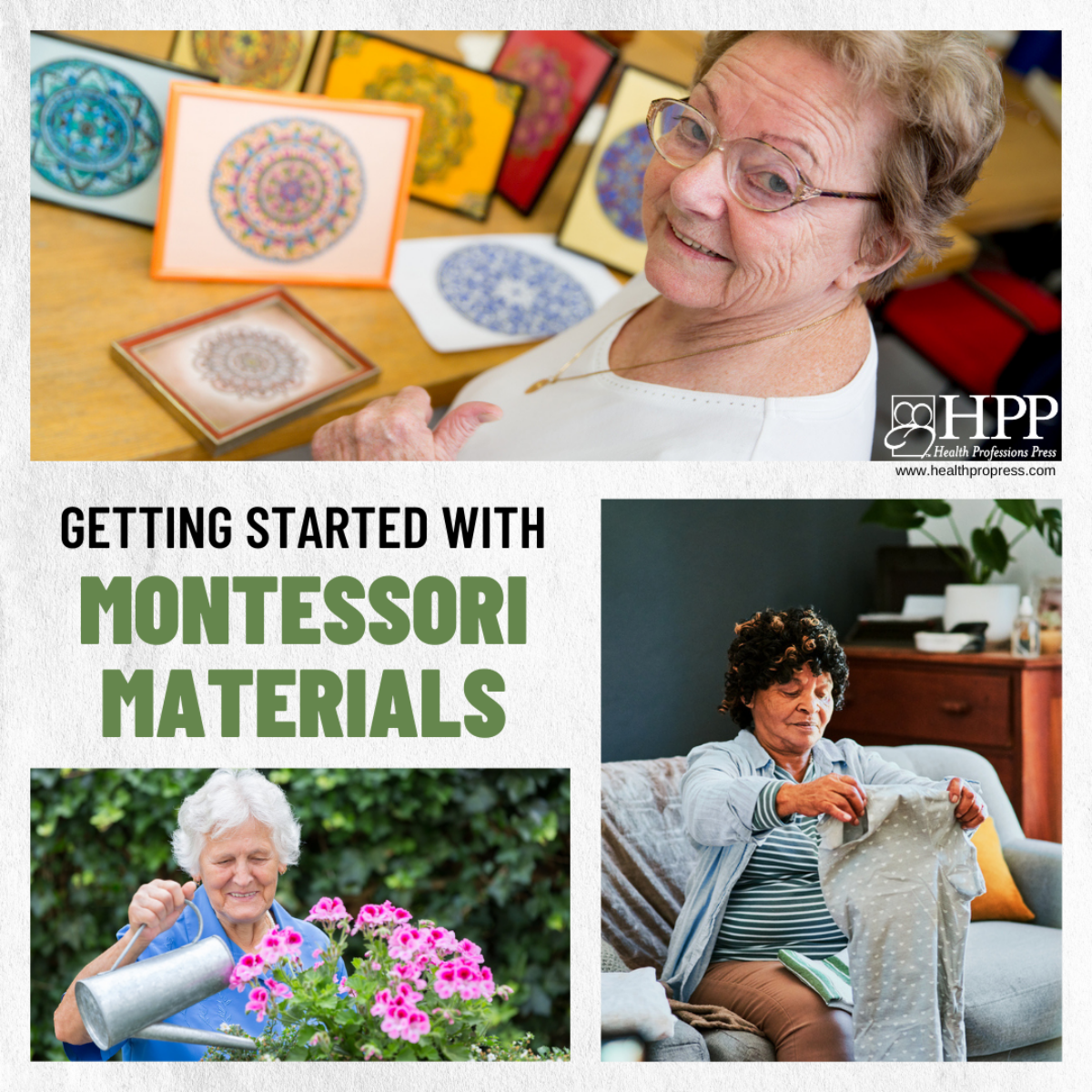
Getting Started with Montessori Materials in Elder Care
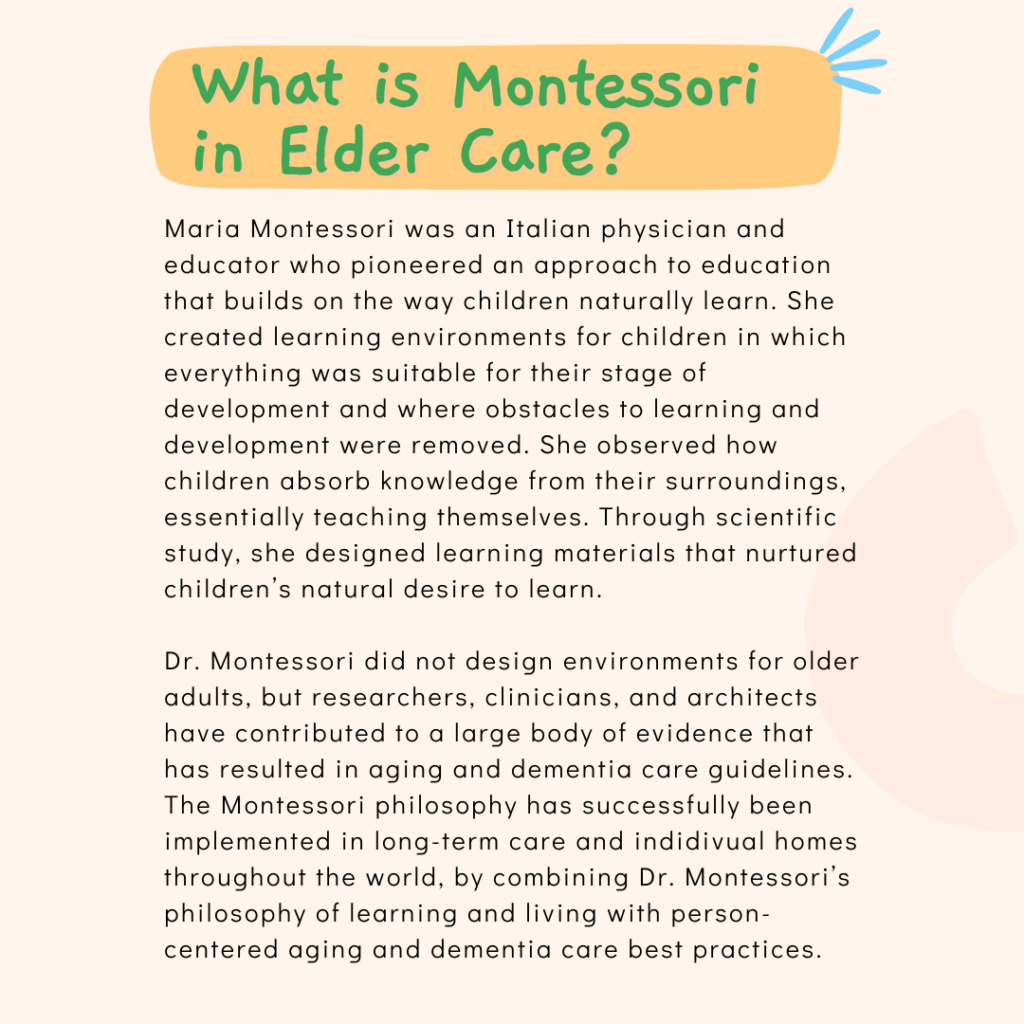 Dr. Montessori designed an array of hands-on materials for every area of the curriculum: Practical Life, Sensorial, Language, Math, Science, Geography, Culture, Art, and Music. Some of these materials can be used—or adapted for use—with elders. Whether using traditional materials or creating your own, these manipulatives share common characteristics: progression from the concrete to the abstract, a control of error, and isolation of difficulty.
Dr. Montessori designed an array of hands-on materials for every area of the curriculum: Practical Life, Sensorial, Language, Math, Science, Geography, Culture, Art, and Music. Some of these materials can be used—or adapted for use—with elders. Whether using traditional materials or creating your own, these manipulatives share common characteristics: progression from the concrete to the abstract, a control of error, and isolation of difficulty.
Characteristics of Montessori Materials
Concrete to Abstract, Simple to Complex
In the classroom, Montessori materials provide concrete representations of abstract concepts. For example, the decimal system is made physical with golden beads, parts of speech are represented by wooden symbols, and the parts of an atom are manipulated on a wooden model. These materials progress from the most simple and concrete representation of a concept, and progress sequentially towards abstraction. The materials used with elders should also start at their most concrete and simple, and progress towards the complex.
For example: Holding and snipping with scissors, a simple movement, is mastered before trimming flower stems in introduced. Folding washcloths is shown before folding clothing or sheets. As elders’ skills improve with hands-on experience and practice, the difficulty of the materials can be increased and new, more complex activities can be introduced.
Control of Error
Whenever possible, Montessori materials include a “control of error” that provides a way of assessing one’s own success without having to rely on someone else for feedback. Materials with a “control of error” place the control in the hands of the elder, facilitating independence and self-reliance.
For example: An elder may be labeling countries on a continent map, using an already labeled control map for reference. Or an elder may be matching shakers that make the same sound and, when finishing, flip over the shakers to see if the colored dots match on the bottom of each pair.
Isolation of Difficulty
Each Montessori activity should introduce only one simple concept or skill at a time. Procedures or movements that may be problematic are isolated and worked on until this skill is mastered. Only when a skill is mastered is an elder introduced to the next (more complex) step or skill. A task should match the abilities and interests of the person and not be so hard that it is overwhelming, nor so easy that it is boring.
For example: Elders practice pouring beans and rice before pouring liquids, and practice threading a needle before making an embroidery stitch.
It is great to have a lot of general activities in the environment from which to choose, and then specifically designed materials that support individuals’ particular hobbies and interests. Remember, the idea is to help elders succeed at what they want to do, so the focus should be on having supplies and materials to create activities and roles that suit each unique individual.
Excerpted from Montessori for Elder and Dementia Care by Jennifer Brush, M.A., CCC-SLP. Copyright © 2020 by Jennifer A. Brush. All rights reserved.
For instruction on integrating Montessori philosophy in your care setting, read this guide!
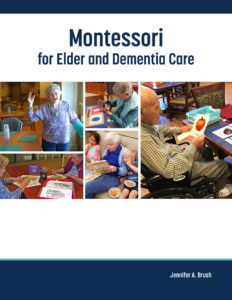 Montessori for Elder and Dementia Care
Montessori for Elder and Dementia Care
By Jennifer A. Brush, M.A., CCC-SLP
Copyright © 2020 by Jennifer A. Brush. All rights reserved.
Jennifer Brush shows care communities how to create and sustain a team that integrates the Montessori philosophy throughout daily life and successfully promotes elders’ functional skills, independence, and identity. Based on her years as a researcher, clinician, and educator, Brush clearly explains the concepts behind this highly person-centered approach, how to create a prepared environment, and how to increase levels of life engagement for older adults.
Filled with helpful advice, forms, and ready-to-use activities, this thorough guide is essential in implementing the Montessori philosophy with elders or people living with dementia.

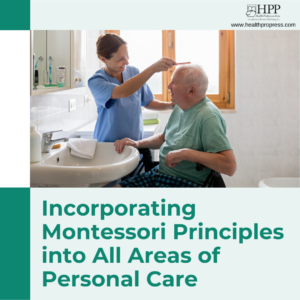
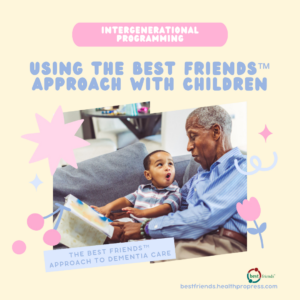

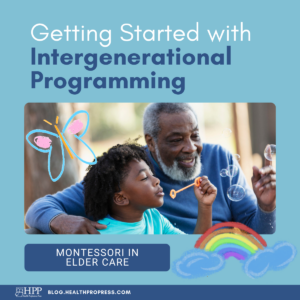
Add comment